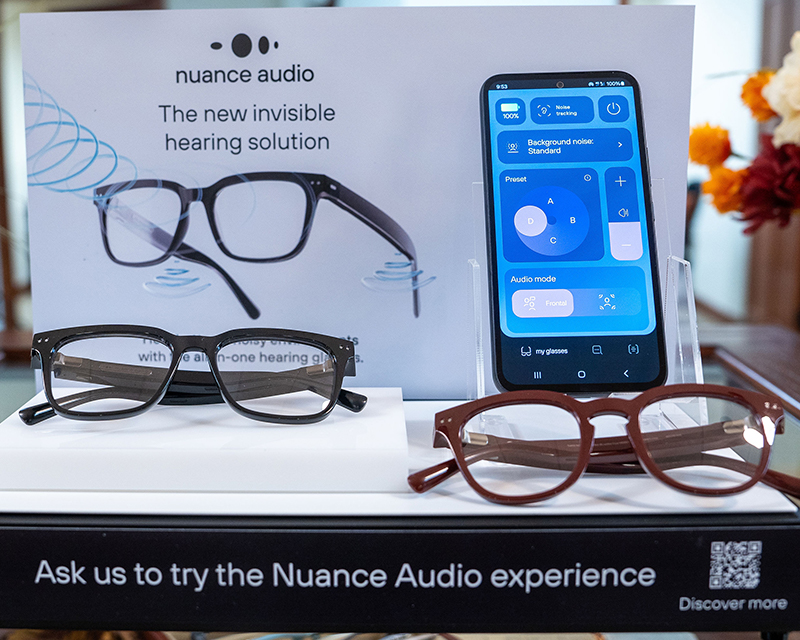
Optical Coherence Tomography (OCT)
It is a non-invasive, non-contact medical imaging technique that uses light waves to capture high-resolution, cross-sectional images of biological tissues. Similar to ultrasound imaging—but using light instead of sound—It plays a critical role in diagnosing and monitoring various eye diseases such as macular degeneration, glaucoma, and diabetic retinopathy by allowing Dr. Arnold to assess changes in the retina, including the macula and the retinal nerve fiber layer.

Optos/optomap
It is a non-invasive retinal imaging technology that captures a wide, 200-degree view of the retina in a single scan. It allows us to detect early signs of eye conditions like diabetic retinopathy, macular degeneration, glaucoma, and even signs of systemic diseases such as hypertension. The scan is quick, safe, and especially useful for comprehensive eye exams, helping identify potential issues before symptoms appear.

Oculus keratograph
It is an advanced diagnostic device to assess the health and structure of the eye's surface, particularly the cornea and tear film. It provides detailed, non-invasive imaging and measurements for evaluating dry eye disease, corneal topography, and meibomian gland function. This technology helps us accurately diagnose and manage conditions like dry eye disease and keratoconus.

Neurolenses
These are specialized prescription lenses designed to relieve symptoms caused by eye misalignment, which can lead to trigeminal dysphoria—a condition linked to digital eye strain, headaches, neck/shoulder pain, and even dizziness. These lenses use a unique contoured prism technology that gradually corrects the eye misalignment at different distances, especially during prolonged near tasks like computer or phone use. Neurolenses are customized to each patient based on precise eye alignment measurements and are often recommended for people who experience chronic headaches and discomfort with digital screens.
Learn More

IPL (Intense Pulsed Light)
Therapy is a non-invasive treatment commonly used in eye care to manage meibomian gland dysfunction (MGD), a leading cause of evaporative dry eye disease. Originally developed for dermatology, IPL delivers gentle pulses of light to the skin around the eyes, reducing inflammation, improving oil gland function, and helping restore a healthier tear film. It can also treat ocular rosacea and reduce abnormal blood vessels that contribute to inflammation. Treatments are typically quick, with minimal discomfort, and are done in a series of four sessions for best results.

Nuance Audio
It is a line of smart glasses designed to discreetly support people with mild to moderate hearing loss. These glasses feature an open-ear design with directional microphones that enhance speech clarity while minimizing background noise, making conversations easier in noisy environments. They can be fitted with prescription lenses and are customizable via a companion app that allows users to adjust volume, noise reduction, and sound focus. Available over the counter, Nuance Audio offers a more accessible and stylish alternative to traditional hearing aids.

Humphrey Visual Field (HVF)
Test is a widely used diagnostic tool in eye care that measures a person's central and peripheral vision. It’s most commonly used to detect and monitor glaucoma, but it can also help identify visual field loss due to optic nerve diseases, brain injuries, or neurological conditions.

Santinelli Edger
It is a high-precision lens cutting machine used in our optical lab to shape and trim prescription lenses to fit various frames. Known for its speed, accuracy, and efficiency, it handles different lens types such as single vision, progressive, and high-index lenses, and can cut complex shapes to match the contours of eyewear. This allows us to make glasses in a more efficient manner, and it can often be done without giving up your frame when you order new lenses.

Topcon Phoropter
It is a highly advanced instrument to measure refractive errors and determine eyeglass prescriptions. It is essential in vision exams, allowing precise adjustments for various lens powers, including spherical, cylindrical, and axis settings for astigmatism. The Topcon Phoropter offers a wide range of lens combinations to test for near-sightedness, far-sightedness, and astigmatism. Its comfortable design ensures patient ease during testing, with adjustable features to fit different head sizes. It is a preferred choice for optometrists looking to provide accurate, efficient, and personalized vision correction.

